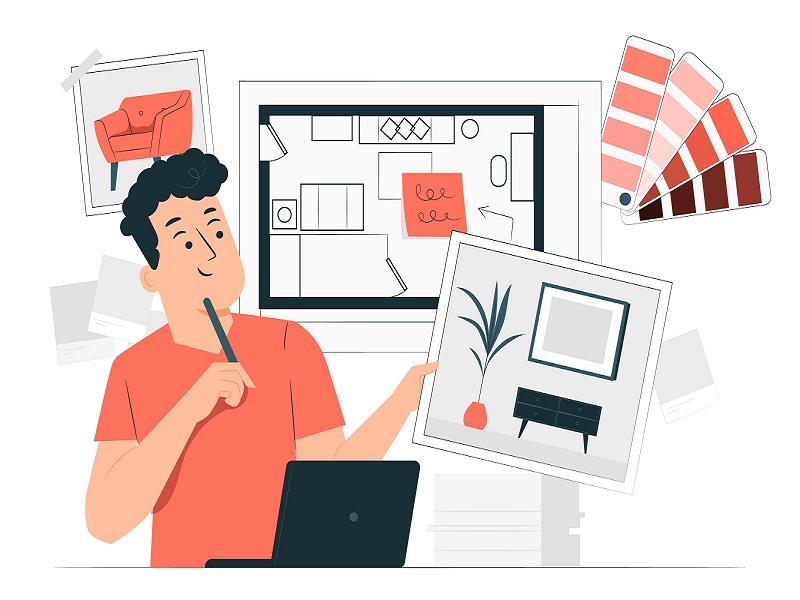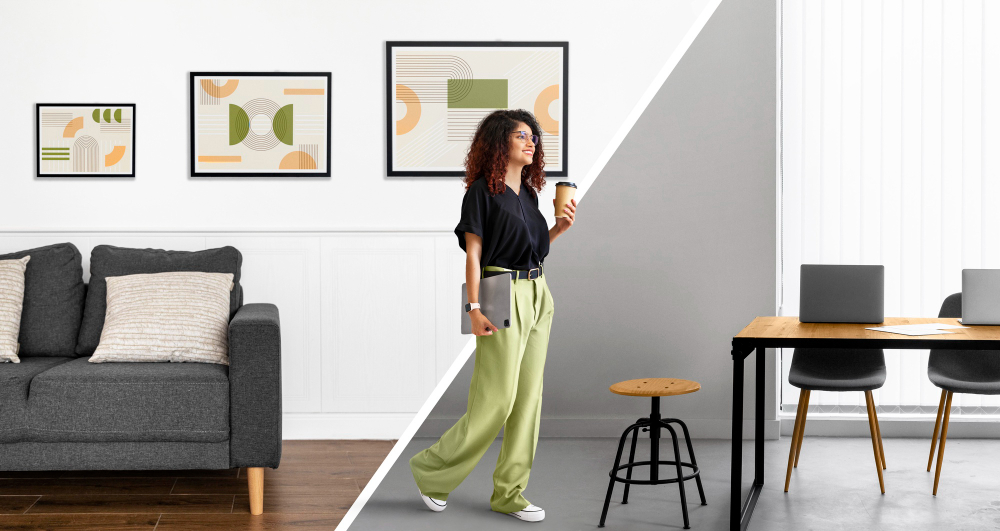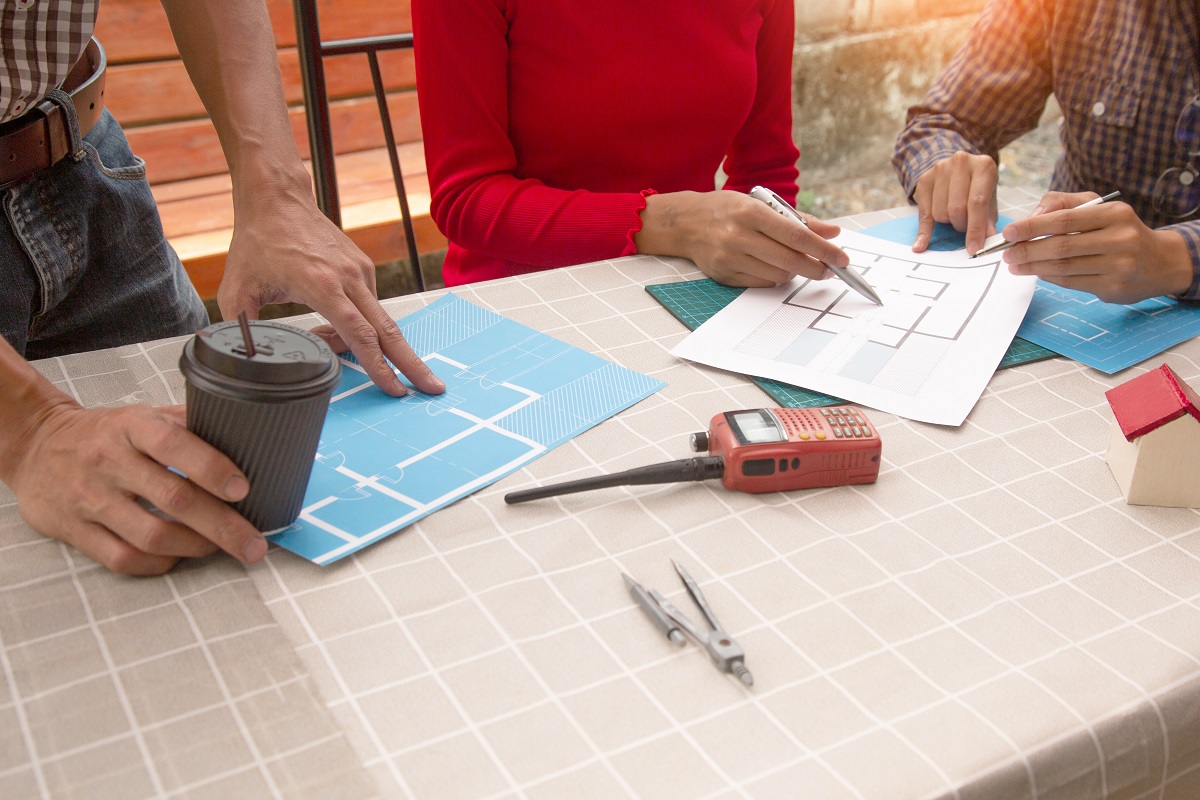How to Become an Interior Designer: A Step-by-Step Guide
A young homeowner looks at blank walls, feeling overwhelmed. They want to turn a space that is closed and empty into a warm, inviting home. Enter the spotlight: Interior Designer—our hero for this blog—a professional bringing creativity, technical skills, and a vision to transform spaces under their belt.
Interior design isn’t just about colors or furniture picking. It’s a highly demanding industry that is expected to reach $255 billion worldwide by 2027. In this blog, you will explore the dynamic realm of How To Be An Interior Designer and its fascinating ecosystem, delving into what exactly designers do, their career paths, and how you can thrive competitively in this field. Let’s dig in!
What Does an Interior Designer Do?
Interior Designers are professionals who boost the interior spaces’ functionality and aesthetic appeal. They closely work with clients and understand their needs and preferences. By taking their feedback, they then perform design creations that match and reflect their vision. Their work often involves a creative blend, technical knowledge, and project management skills.
Key Responsibilities of an Interior Designer
Interior Designers play an important role in transforming both living as well as working spaces to meet the client’s functional and aesthetic needs. Their responsibilities encompass a broader range of tasks. These include final design implementation and ensuring the style’s seamless integration, functionality, and space’s client preferences. Here are the Interior Designer’s key responsibilities and roles:
Do you want free career counseling?
Ignite Your Ambitions- Seize the Opportunity for a Free Career Counseling Session.
- 30+ Years in Education
- 250+ Faculties
- 30K+ Alumni Network
- 10th in World Ranking
- 1000+ Celebrity
- 120+ Countries Students Enrolled
a. Client Evaluation and Needs Analysis: The Interior Designer’s work takes center stage through comprehensive client evaluation. This involves their lifestyle, personal tastes, and specific requirements understanding for the project. The goal is to gather all necessary information to determine the project’s objectives and constraints.
Read Also: The Growing Scope of Interior Design as a Career in 2025
b. Concept Development and Design Proposals: Based on the gathered information, the designer develops an overall project’s concept. This includes design proposal preparation that may consist of sketches, mood boards, and floor plans. These proposals help in the intended design visualization and ensure it aligns with the client’s vision in an accurate manner.
Book Now →
c. Material, Color, and Furniture Selection: The designer then specifies all the project’s elements, ranging from finishes to furniture. This involves materials selection, colors, furniture, and accessories that reflect the intended style and meet the space’s functional needs.
d. Technical Drawings and Spatial Layout: Using specific software, the designer creates accurate floor plans, sections, and elevations. These technical drawings are essential for the precise execution of the project. They ensure that every detail is accounted for and can be correctly implemented.
e. Professional Collaboration: Collaboration is a key interior design pillar. The designer works with architects, engineers, and contractors closely to ensure the project’s feasibility and budget and compliance with the deadline. This coordination helps seamlessly integrate various project aspects.
Do you want free career counseling?
Ignite Your Ambitions- Seize the Opportunity for a Free Career Counseling Session.Types of Spaces Interior Designers Work On
Interior Designers work on diverse spaces, each with its own sets of unique requirements and challenges. If you are curious about How To Be an Interior Designer, it’s important to know that there are two main interior designing space categories: residential as well as commercial. Here are the key space types Interior Designers typically work on:
a. Residential Spaces: Interior Designers often focus on single-family houses, apartments, and condominiums. They create environments that are both personalized and comfortable and reflect the occupant’s lifestyles and individual tastes.
b. Commercial Spaces: They also design schools, offices, retail stores, community centers, and fitness facilities. These spaces are conceptualized around a corporate image and functional requirements.
c. Design Focus in Residential Spaces: Home Interior Designers concentrate on the customer’s specific design style they are designing for. They aim to create cozy and personalized environments that exude self-expression and cater to the particular family or individual’s needs.
d. Design Focus in Commercial Spaces: Commercial designers take user experience into account when space designing. They ensure that there is a strong design alignment with the corporate image and that the businesses’ functional needs are thoroughly met.
Read Also: Interior Designing Tips for Maximizing Natural Light in Any Space

How To Become an Interior Designer After 12th
Becoming an Interior Designer in India involves several key steps. Here’s a structured approach to help you understand How To Be an Interior Designer:
1. Complete a Certificate or Diploma Course
Interior design certificate or diploma course is the first step after completing your 12th. This course duration varies by institution, and they are offered by both private and government-run institutes. After the course completion, prospective Interior Designers can take up various levels of internships, apprenticeships, and practical training to gain more knowledge and interior design’s experience.
2. Gain Industry Experience
The second step is to gain some industry experience. Aspiring Interior Designers need their reputation building by gaining experience and creating a work portfolio. This can be achieved by working under an experienced Interior Designer’s guidance as an intern or trainee. Additionally, they should seek opportunities to work on creative projects that help them refine and showcase their talent.
3. Get Certified by a Recognized Body
The final step in mastering How To Be an Interior Designer is to enter an interior design association or a recognized body’s certification. Certification validates aspiring Interior Designers as legitimate field professionals. It also grants valuable resources and networking opportunities access for career enhancement.
How to Become an Interior Designer Without a Degree
How To Become an Interior Designer Without a Degree and experience is 100% possible if you possess the right skill sets and direction. Here are some essential skills and steps to help you get started:
1. Experiment with Different Spaces: Pick up a space and try to transform it with distinctive ideas. Don’t restrict yourself to living spaces; try office spaces too.
2. Learn Technical Aspects: Design aspects like metal fabrication, electrical, HVAC, plumbing, RCC, ergonomics, and BOQs are integral parts of interior design. Learn about these aspects using online resources, tools, and tutorials.
3. Practice on Small Spaces: Pick up small spaces in your house or a friend’s house and try designing in distinct ways. Document your work in the form of pictures and with proper concept notes.
4. Drafting Software: Equip yourself with knowledge of AutoCAD, SketchUp, and SolidWorks.
5. Internships: Consider pursuing an internship with a professional Interior Designer to learn the nuances of the field.
6. Blueprint Practice: Practice making small spaces blueprints and how you would like to design them.
Networking Strategies for Aspiring Interior Designers
Networking effectively is crucial for building a successful career, especially for those exploring How To Be an Interior Designer. Here are some key strategies to help you network effectively:
1. Identify Key Contacts: As you start networking, you will find two main types of people to connect with. The first type is someone who meets and advises your potential clients but doesn’t usually directly compete with you. These are business people who are your potential client’s trusted resources and can offer them advice or make recommendations on specific service providers.
Read Also: The Power of Textures: How to Add Visual Interest to Any Room
2. Build Relationships with Referral Partners: These contacts are typically called referral partners. Building such connections is especially valuable when exploring How To Become an Interior Designer After 12th, as strong networks can lead to opportunities and collaborations. It’s smart to establish as many of these relationships as possible because you can’t predict how periodically these referral sources will pass your business.
3. Stay Top of Mind: If your business appears to be trending on a downward path, try to schedule meetings with your referral partners to stay on top. This means they will think about you when speaking with a client.
Challenges in Becoming an Interior Designer
Becoming an Interior Designer comes with its own set of challenges. Here are some key obstacles you might face and the profound ways to overcome them:
1. Maintaining Your Unique Design Style
One significant challenge is maintaining your unique design style. The industry attracts specific personalities, but it’s crucial not to adopt a highbrow attitude. The best designs mirror the client’s personality and requirements, not just the latest fads or the priciest items.
2. Managing Client Expectations
Another hurdle in learning How To Be an Interior Designer in India is managing client expectations. Clients often have firm ideas about their space and may want to tweak your initial designs. This is where your communication skills and adaptability become essential. You’ll need to be quick-thinking, offering alternative solutions that address their issues while keeping your overall vision intact. Enhancing your sales skills while you’re still studying, perhaps by working in a retail setup related to design, could be beneficial.
3. Mastering Drafting Software
Mastering drafting software is a fundamental aspect of interior design. If you have the chance to learn drafting software in high school, seize it! It will provide you with a leg up in design programs and future job prospects.
4. 3D Modeling Software Proficiency
Besides drafting, you should have 3D modeling software proficiency, such as SketchUp or Revit. These tools allow you to create realistic design visualizations, making it easier for clients to understand their conceptual understanding and enhance their portfolios. Besides this, photoshop knowledge is valuable for creating presentation materials and mockups.
Read Also: Interior Design Courses to Unlock Your Potential in the Design Industry
5. Continuous Learning and Experimentation
Always remember that the best designers are forever and lifelong learners. It’s important that you must stay curious, keep up with emerging technologies and trends, and don’t be afraid to experiment and develop your unique as well as distinct style. There will be a lot of arising challenges, but bringing your vision to life satisfaction is truly rewarding.

Conclusion
Interior design plays a critical role in creativity, technical skills, and innovation to craft beautiful spaces. By learning the ropes, building connections, and persevering challenges, you can forge a successful career in this dynamic interior design field. Whether you are designing homes or commercial spaces, ideas into reality transformation is a rewarding and satisfying aspect. So, step forward, aspiring designers, and let your vision become the global transformation around you!
Read Also: Interior Designer vs. Architect: Understanding the Key Differences
We hope most of your questions are answered, like How To Be an Interior Designer, how to become an Interior Designer without a degree, what to study to become an Interior Designer, etc. For more information on interior design courses or if you are looking to enroll in any of our courses, connect with our AAFT team today.
Frequently Asked Questions
Can Interior Designers Become Architects?
Yes, an Interior Designer can become an architect. This path requires education, dedication, and experience in both fields. Some universities offer accredited architecture master’s degree programs that don’t require an undergraduate degree in the same field. After the completion of such a program, aspiring architects must gain experience as intern architects for a minimum of 3,720 hours in specific categories. Additionally, it is crucial to ensure that the degree program is accredited by the NAAB (National Architectural Accrediting Board).
Can an Interior Designer Work From Home?
Absolutely! An Interior Designer can indeed work from home, particularly through “e-design.” This method involves creating designs using virtual tours and images provided by clients. It allows designers to work remotely and collaborate online, making it a flexible and efficient option.
Will Interior Designers be Replaced by AI?
No, it is unlikely that AI will replace Interior Designers. Although it can serve as a crucial tool for them to streamline their core technical functions, such as rendering, design concepts, and narrowing down possibilities.
Who Is a Commercial Interior Designer?
A commercial Interior Designer is a certified professional who creatively designs functional as well as visually appealing indoor business spaces. These include hotels, retail stores, offices, and restaurants. Their key focus is on environmental design for the company’s brand’s reflection and space usage optimization for the intended purpose while adhering to codes and regulations building.
What Degree Is Best for Interior Design?
There are numerous interior design degree courses in action. However, if you are considering What To Study To Become an Interior Designer, we recommend a Bachelor of Design (B.Des.) in Interior Design. This comprehensive undergraduate program equips you with all the necessary problem-solving skills and preparation for real-world challenges.

AAFT has been providing the world with limitless creativity and expression since 1993! Through a dynamic and industry-driven curriculum, AAFT provides engaging and captivating articles to persuasive blogs and empowers its readers to explore diverse avenues of creative media education-related content.






